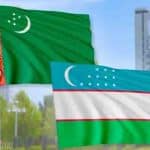Madrid, Sept 22 (AFP/APP):The Prado Museum said Thursday it was investigating the provenance of 62 works in its collection to determine whether they were seized during Spain’s civil war or the Franco dictatorship.
“The aim is to clear up any doubts about the origins and the context that brought about the entry (of an artwork) into the Prado’s collection,” said a statement from the museum.
If the law allowed, they would be returned to their legitimate owners, it added.
The Madrid-based museum had on Tuesday released a list of 25 works that “originated from seizures during the (1936-39) civil war”, publishing images of 22 of the paintings on its website.
By Thursday, the number of artworks confirmed as seizures rose to 62, most of them paintings.
Among the works are paintings by 17th-century Flemish artist Jan Brueghel the Younger, French painter Francois Boucher and impressionist-inspired Spanish artist Joaquin Sorolla, according to the list.
Most of the works were being held in storage, although five of them — one by Sorolla — have been on display at public museums in Girona, Granada and Malaga, RTVE public television said.
“The quality of the works is very diverse, there are some by well-known masters like Joaquin Sorolla, but also anonymous paintings whose ownership will probably never be known,” Andres Ubeda, the Prado’s head of conservation and investigation, told public television on Wednesday.
Investigators will now try and establish why these works were seized, he said, indicating it was the first step in what would likely be a long process aimed at restoring the artworks to the families of the original owners.
“The seizures carried out by Franco’s government were aimed at taking away the legitimate possessions of their wartime enemies,” he said.
The Prado said it had set up a team to probe the provenance of works in its collection. It will publish its report in January.
“The Prado Museum has decided to formally open an investigation into the possibility that some of the works in its collection may have come from seizures during the civil war or during the Franco dictatorship,” which ended in 1975, it said on Tuesday.
All 25 works initially identified were “deposited in (the museum’s) collection by the Commission for the Defence of Artistic Heritage” set up by Francisco Franco during the civil war, the statement added.
Seventeen of those paintings were given to the museum between 1940-1942, while another six were initially transferred to Madrid’s Museo de Arte Moderno in 1942-43 and later acquired by the Prado, it said.
Follow the PNI Facebook page for the latest news and updates.








